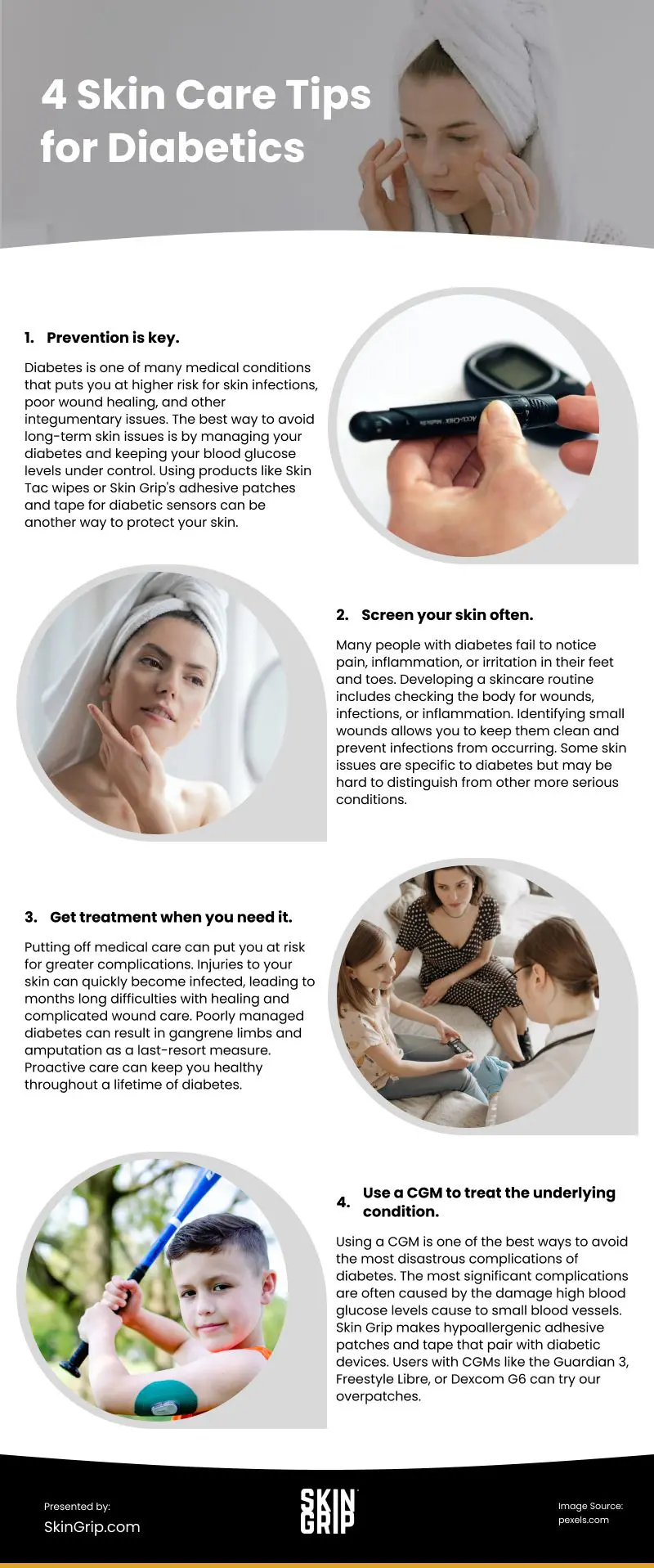
In 2020, diabetes was the eighth leading cause of death in the United States, per America’s Health Ranking report. It proves how pervasive this disease has become and emphasizes why it is essential to recognize its risks. One of these potential difficulties is dermatologic issues alongside an augmented risk for infection – both of which can be avoided simply by being aware that they exist. So, understanding the implications associated with diabetes is critical for keeping healthy.
Diabetes-related skin complications may appear anywhere on the body. However, they are most common in facial areas, arms, and legs. Be mindful of your skincare routine if you have diabetes, as you can suffer from dryness or develop itchy fungal and bacterial rashes. Therefore, make sure that any products used are suitable for your specific skin type. Additionally, you can use the following management techniques to ensure additional safeguards:
1) As the age-old adage goes, an armful of prevention is worth a barrel of cure. For those living with diabetes, regular blood glucose monitoring should be part and parcel of ensuring that levels are in check. Additionally, self-care is one of the most crucial components in maintaining healthy skin – by keeping sugar levels under control, you can more effectively preserve your complexion from potential damage.
2) You should conduct physical activities with extra caution to avoid cuts and puncture wounds that are painful or slow to heal. Too much pressure on the feet can cause skin injuries, especially for those with diabetes who are more vulnerable to foot ulcers. Refraining from going barefoot is a simple measure that could save a lot of trouble.
3) Hypoallergenic skin patches protect against discomfort and irritation from sports and everyday activities. These adhesive coverings are ideal for where rubbing or friction may occur, so you can keep your skin safe while staying active.
4) Proactively monitoring your skin regularly can save you from serious future problems. Checking for wounds, discolorations, inflammation, blisters, and dryness can alert you to any irregularities before they become too severe. With diabetes comes an impaired ability to combat infection – so individuals with this condition must remain vigilant in their self-care routine.
5) Diabetes can be a tricky disease to manage, and many individuals may find themselves in denial of its effects on their skin. Suppose you notice any rashes or wounds appearing. In that case, you must immediately seek medical attention – the sooner something gets addressed, the less likely one will experience severe complications.
6) For those living with diabetes, CGM or Continuous Glucose Monitor devices offer paramount usefulness. Studies have shown that CGMs help users maintain their blood glucose levels within the ideal range. With uninterrupted readings throughout the day, individuals can observe how their sugar fluctuates in response to diet, insulin injections, and physical activity – to name a few. They can adjust their lifestyle accordingly and better manage their condition.
The key is to take precautionary steps and establish a regular skincare routine that works for you. Skin is one of your body’s first lines of defense against disease, so critical care will go a long way in mitigating potential health risks. Therefore, if you have diabetes, it is essential to be informed about its consequences and take the necessary initiatives to stay healthy. By taking preventive measures and following a doctor-approved skincare routine, you can keep your skin looking its best while keeping yourself safe from further complications.
source: https://skingrip.com/blogs/diabetes-tips/skin-care-and-diabetes-things-you-need-to-know
Comments
Download this infographic.
